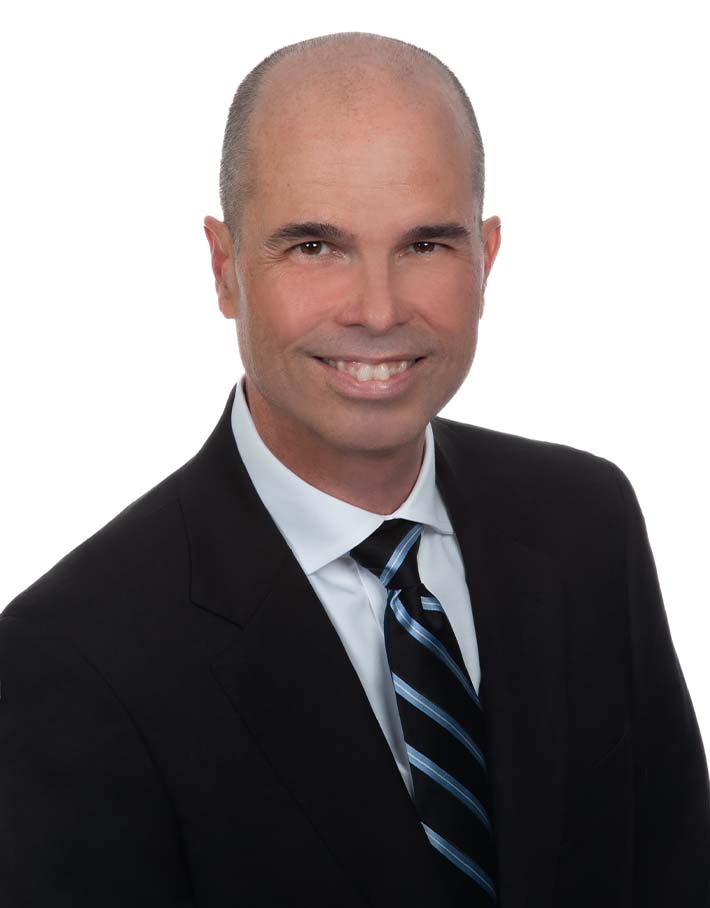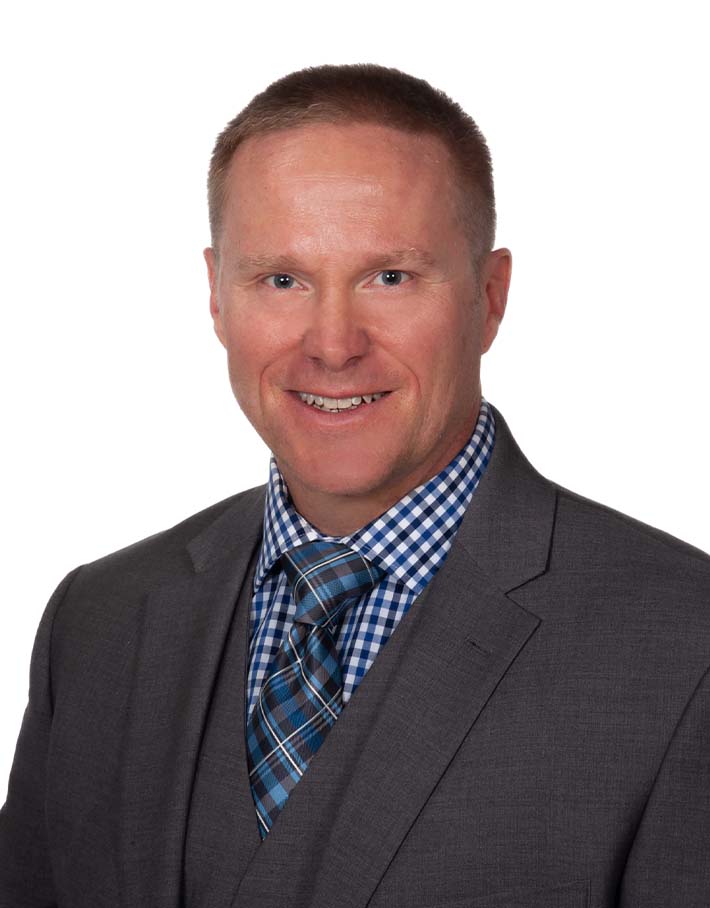Finding Success with CAT CAIS Reporting
By Buddy Doyle, Ralph Magee, Jeff Gearhart and Mark Hendrickson
Subscribe to our original industry insights
FINRA Consolidated Audit Trail (CAT) reporting continues to evolve from account-centric trade reporting requirements to now including customer-centric Customer Account Information System (CAIS) reporting. Join us for an Part 1 of an insightful discussion on FINRA’s CAT CAIS reporting, featuring Mark Hendrickson, Head of Trading Streetside Operations at D.A. Davidson. Mark is also an Industry Advisory Committee Member representing clearing firms on the U.S. Advisory Operating Committee of the Consolidated Audit Trail.
Navigating CAT Compliance and Regulatory Expectations
Listen as Mark and Oyster Consulting’s Buddy Doyle, Jeffrey Gearhart and Ralph McGee explore the evolving landscape of CAT/CAIS reporting, industry concerns, and best practices for compliance, including:
- The evolution and current state of CAT/CAIS reporting, including challenges with the implementation and regulatory guidance.
- CAT regulatory developments and industry response
- Inquiries, compliance, and the challenge of perfection
- Industry Members’ role in ensuring compliance, including the shift from reactive to proactive compliance in CAT reporting and how D.A. Davidson has been proactive and successful in preparing for and executing its CAT reporting requirements
- Data accuracy, security, and reporting oversight
- The role of CAT Reporting Agents and vendor partnerships
This episode provides valuable insights into the complexities of CAT and CAIS reporting, highlighting best practices, regulatory expectations, and strategies to ensure compliance. Whether you’re a compliance officer, trade operations professional, or regulatory expert, this discussion will help you navigate the evolving landscape of regulatory reporting.
Your Partner in Achieving CAT and CAIS Compliance
Oyster Consulting’s CAT experts help your firm meet CAT reporting requirements and get the most out of CAT reporting investments. With our support, you can reduce costs, save time, and focus on growing your business while maintaining compliance.
Our proprietary Oyster Solutions CAT reporting application consolidates all CAT reporting events, error analysis, and validation data into one central program. This powerful application helps identify errors, connections, and missing information in vendor data and CAT-reported data, making the reporting process easier and more efficient for you.
The Oyster Solutions CAIS Module lets you see CAIS reports and source data on one platform. You can use it with or without the CAT Application. Companies can achieve Full CAIS reporting with the help of a web-based tool. This tool helps them identify and correct errors in their data.
Listen to Part 2
Transcript
Transcript provided by TEMI
Bob Mooney: Welcome to the Oyster Stew Podcast. I’m Bob Mooney, General Counsel for Oyster Consulting. FINRA’s Consolidated Audit Trail, or CAT, continues to evolve from account-centric trade reporting requirements to now including customer-centric CAIS reporting. Today we welcome Mark Hendrickson, Head of Trading Streetside Operations at D.A. Davidson. Mark is also an industry advisory Committee Member representing clearing firms on the US Advisory Operating Committee of the Consolidated Audit Trail. Join us as Oyster CEO, Buddy Doyle and consultants, Jeffrey Gearhart and Ralph McGee chat with Mark about the current state of CAT/CAIS reporting industry concerns, what we see coming in 2024 and beyond, and how D.A. Davidson has been proactive and successful in preparing for and executing its CAT requirements. Let’s get started, Buddy.
Buddy Doyle: Thanks. We are really happy today to be joined by Mark Hendrickson from D.A. Davidson who’s joining the Oyster team of Ralph McGee and Jeff Gearhart from our Trading and Markets practice. Welcome, Mark. It’s good to have you here.
Mark Hendrickson: Thank you, Buddy.
Buddy Doyle: Why don’t we turn it over to Jeff here to MC our podcast today and ask us all the appropriate questions that are our clients’ minds.
Jeff Gearhart: Thanks, Buddy. There’s certainly a lot going on in the CAT/CAIS world. Most recently they announced the new fee schedule, which has the ongoing transactional fees as well as the way to recoup the 500 million or so that it cost to put this in place in the first place. Also, CAIS has a final implementation date of May 24th (2024), which just so happens to be the same date as T+1 going live. So that’s interesting. And then, also within the recent past, the first AWC came out for quite a substantial amount regarding failure to do CAT reporting correctly. So clearly a lot going on. What do you think we can expect in terms of FINRA’s focus, use of the data, inquiries, everything going forward from here?
Mark Hendrickson: Thank you, Jeff. Everyone, Mark Hendrickson with D.A. Davidson. It’s hard to know what to expect. I think with everything that’s happened with the CAT from the very poor implementation and the processor selection of thesis to scrapping that, we’ve had a series of challenges on the trade reporting side, including a COVID delay that delayed us from the original implementation date or compliance date of April to June of 2020. We’ve seen various iterations and phases of the CAT, each with a particular focus on reporting over and above what the original OATS system had within scope. I think really what’s key here is that we haven’t really had in some cases clear guidance on how to actually do CAT reporting. I know that sounds surprising, but it really is true from the scenarios that they publish where they clearly said these are examples only, not guidance, as to how to properly report and that put firms at a big disadvantage.
And, we ended up spending a significant amount of our time and treasure in assisting the new plan processor, which was FINRA CAT, which interestingly was staffed primarily from people from FINRA trade regs such as Shelly Boland, and Paul McKinney. So that’s provided challenges, and I think it’s going to provide challenges going forward with CAT reporting as we get these inquiries. Davidson has received several inquiries on how we’re reporting certain things where it hasn’t been clear, and the technical specs are in the rule itself. So it’s hard to predict the future, but I think we are going to see some ongoing rulemaking by FAQ. I know we’re going to see some requests coming from FINRA Trade Reg to add certain things to CAT trade reporting, all of which is concerning. Every time they change something or give us new guidance, our CAT Reporting Agents and, by default, our CAT provider, which is Oyster, is going to have to respond to those changes, including the inquiries and any historical corrections we have to make. So, it’s hard to predict the future, but I’m sure it’s going to be a lot of fun.
Jeff Gearhart: So FINRA’s already reviewing the data, making changes. Do you sense that they’re already making inquiries based on just the transactional data that’s been reported?
Mark Hendrickson: They are, and in some cases, unfortunately. Dave Chapman, who’s been a primary person on the FINRA side, acknowledged this. He said, we’re learning this too. And what could be more scary than having the primary person from trading and markets regulation at FINRA saying, Hey, sorry about that inquiry, but we’re still learning it. Is anyone that’s been doing this for a while surprised by that? Certainly not. I think the attitude that I love from David was simply that, hey, we need you to help us. And I did appreciate that. That’s what we want to hear from the examiners. And unfortunately, we’re not getting that same level of partnership with the SEC. So again, I think it’s the inquiries that firms have been getting have run the gambit of you are clearly doing this wrong per the spec.
And Davidson received one of those. In fact, Oyster’s working now on researching what we can do to historical corrections based upon representative orders, which has been a particular pain point for firms, and understanding how we’re supposed to report those. So again, I think that the inquiries, at least from a Davidson perspective, and my friends within the industry that I talk to all the time, it’s been a learning curve for FINRA where we’ve explained to them we are reporting correctly and here’s why. Or we’re reporting as best of our ability because this is poorly defined. Can you help us and let us know if we do need to make changes, to them being educated enough to say clearly, you’re doing this wrong. And whenever we get that, of course now we’re in a situation where I’m like, oh, we are mandated to be perfect.
I’ll explain that just a little bit. The rule clearly says that if we can correct something that was reported inaccurately or incompletely, and I’m not talking about errors or rejects, I’m talking about we successfully reported, it was accepted by the CAT, but we were reported incorrectly. All of those have to be corrected, and that makes it particularly challenging because we can’t throw up the de minimis flag and say, look, this does not impact your market transparency or investor protection, yet we are mandated to be perfect in our reporting. I think that’s going to be a topic that’s probably going to rise to the surface because it takes firms a lot of time and treasure to research and to go back and do those historical corrections. Thankfully we’ve partnered with Oyster, in order to allow us to respond to those more quickly because we have more than just one CAT Reporting Agent. So Oyster is our way of putting it all into a single bucket so we can clearly see what we’ve reported historically and be able to correct those based upon inquiries we get even though we don’t want to.
Ralph Magee: Mark, I have a question for you. Do you think that there’s a particular stance that the Industry Members take across the board? Are there any similarities between the folks that you’re talking to and that some of them are going to be your introducing brokers? And do they feel as if their clearing firm is taking care of a lot of this surveillance on their behalf? Or do you think the industry is starting to mature to the point to where they recognize that they need to be doing more proactively than reactively? You know, maybe like what we used to do in the OATS world. We were primarily reactive to any kind of feedback files that we received from the industry. Do you feel like that has shifted yet for CAT? Or do you think that’s still something that’s out in the future?
Mark Hendrickson: I think it’s out in the future. I think primarily one of the benefits of being a fully disclosed correspondent with a clearing firm is the fact that you have a certain expectation. The clearing firm’s going to take care of stuff for you, and I think that clearly is not only for CAT reporting. I think where it may be different and purely from a rule perspective is on the CAIS reporting. The clearing firm does not have the relationship with those end clients, nor is under the guidance of KYC. They do definitely have a much lower, I hate to call it level of care, but on the CAT trade reporting side, I think if I were a correspondent of a clearing firm, I would be looking to that clearing firm to be spearheading the CAT trade reporting and getting to me only if they needed clarification, such as, am I reporting correctly based upon X, Y, or Z? So I don’t know if that’s going to change. Again, I think that correspondents have a certain expectation when it comes to regulatory reporting across the board that their clearing firm is taking care of that primarily for them and really only getting to them on firm specific inquiries.
Buddy Doyle: I think that control quality position is really important, especially when you’re delegating essentially your CAT reporting to your clearing firm. Mark, how are you guys looking at the quality of the submission, the inputs to the outputs?
Mark Hendrickson: I think, again, we really have to delineate between CAT and CAIS reporting, which is really groundbreaking. I don’t think it’s getting as much press time on how big that actually is, but on the Cat reporting side, rejects are easy errors. We get a positive response back saying you did something wrong. That’s not what I’m concerned about, and I don’t think other firms should be concerned about that because we can react quickly to that. We see it on T+1, whether it’s a counterparty of ours not doing the correct reporting. We can manage to do that. And I think most of the wrinkles have been worked out of that. If you look at the historical error rates of CAT trade reporting, they’ve dropped.
Because we know what we’re supposed to report in order to get an accepted record from our CAT Reporting Agent. The problems that we have is, is it complete and is it accurate? And that’s where the danger is. And there was a very massive fine levied, not surprisingly, on a firm that was not reporting completely. And that’s where I stress internally that I know that we have an awesome peer rejection rate. That’s great. But let’s move on from that and look at our source data. Look at the data that’s actually happening in the real world on our trading systems and ensure that our CAT Reporting Agents are reporting all of it and they’re reporting it correctly per what really happened. Because the CAT has made stuff up. They’ve made things up as far as reporting events that don’t exist in the real world, and that introduces danger. Because they can come in and say, we don’t believe that you’ve reported completely. And I think we’re going to see these fines and these findings, public ones, continue to happen where firms are not reporting either completely or accurately to what their books and records are.
Buddy Doyle: Yeah. And I think the testing the negative, the thing that doesn’t exist that should, is always really difficult to pull off. It takes a fair amount of resources and time and a disciplined approach, which I’ve been impressed with the way Davidson has gone about this. I imagine, Mark, it’s been sort of frustrating given that the CAT software is hosted, not necessarily by a technology company, but it feels like a regulator, doesn’t it? Which I guess we stubbed our toe on the thesis rollout, but how has that impacted you throughout this whole process that it’s a regulator that’s kind of a vendor like environment?
Mark Hendrickson: Yeah, I chuckled. We knew that thesis was failing, but no one wanted to talk about it. According to my boss, I’m a little bit too open with my criticism of the regulators. But frankly, and then they say, okay, well we have this new plan processor and it’s called FINRA CAT LLC. Oh, and guess what? It’s being headed up by Paul McKinney and Shelly Boland. I mean, that was, and in all honesty, we were happy to see that because we were struggling with this. We essentially became the senior business analysts spending our money to tell them how trading works and how CAT needs to work. But at least we had someone, and Shelly and Paul brought in staff from FINRA Trade Reg to support them.
So that was a big win for the industry. But the fact is, I do not appreciate being told by FINRA CAT, Mark, you’re doing it wrong. By the way, we’re not a regulator, so we can’t make you do it right. And further, we can’t exactly tell you how to report in the first place. We can only point you to the examples in the scenarios doc, which is not guidance, or we can point you to the poor technical spec that also doesn’t give good definitions of what the reporting requirements are. So as you can tell, it’s been enjoyable having a plan processor and not a regulator tell me what they can. What I need them to tell me they can’t. And what they do tell me is I’m doing it wrong, but we can’t tell you how to do it right. You need to go talk to FINRA, which is enjoyable, as you can imagine, Buddy.
Buddy Doyle: I’ve had the pleasure many times of working with FINRA.
Mark Hendrickson: I know you have.
Buddy Doyle: So, and when you’re trying to get a detailed answer that makes you feel confident in your decision, it can get a little frustrating from time to time. Mark, it’s been fascinating reading all the press about CAIS and the security concerns that the industry has, and listening to folks talk about it. If you’re not in the industry you might think, hey, customers should just take their money and put it in the bank. But it’s not really about that. It’s about the liability for the security, I think. Is that anywhere close to being resolved or is it just, this is your problem?
Mark Hendrickson: Well, and that’s interesting. It got a lot of press time, and it landed us in the current spot that we’re in, which is we are not submitting actual real social security numbers. Let’s just get down to brass tacks here. We don’t, I don’t care about an P I N. I care about social security numbers, and that’s what everyone should care about. And that’s where they came up with this. Let’s hash the social security number, which is the concept of transformed identifier. Right? Now, to think that someone can’t backward hack something from an algorithm that creates the TID, I think, is disingenuous. So now we’re reporting this TID separately from the actual natural person customer, which I think gives people a level of comfort, but at the same time, this has been the largest gathering of natural person data in the history of the world.
That’s what this is. Blue Sheets was on a request basis with a defined security or a defined PO, potentially CRD rep code with a date range. So that was a small population of data compared to reporting every single natural person in the United States as well as foreign people who have accounts at FINRA member dealer firms, reporting all of their information. Whether it’s transformed or not, that’s a target rich environment. And, there’s been some focus on that, but it’s kind of died off. But then I always tell people, look, I was submitting Blue Sheets when it was actually on blue paper in 1991, that’s got 500 social security numbers that’s sitting in a file cabinet somewhere at the SEC. So if you’re all that concerned about this transformed identifier, there’s other reasons to be concerned.
And I would also note on this, because it’s near and dear to my heart, when are blue sheets going away? Publicly, we’ve gotten nothing from the SEC and frankly, and unfortunately I have to say, that they’ve been spoiled getting unmasked social security numbers for over 30 years. I don’t think blue Sheets are going away. What I think is happening is they’re going to take the CAT data, they’re going to key in on some suspicious trading activity, and because they don’t get the mass social security number, I’m going to get a blue sheet as a result of their CAT inquiry. We’re going to live with blue sheets. That’s what I want to advocate against, and that’s what we should be pushing the SEC on. The danger, in my opinion, is not the CAIS – it’s continuing to submit unmasked social security numbers on blue sheets, which according to Rule 6-13, we were supposed to retire legacy systems. And now the SEC is going back on that as well. It’s unfortunate.
Ralph Magee: Mark, what are the other pain points that you see at Davidson in being duplicative in reporting to both CAT and CAIS?
Mark Hendrickson: Well, the challenges we had with CAIS, and some are yet to be seen given the delay in the rollout, is obviously the rule is quite clear. If we have a CAT reportable transaction that has an FDID, which is just simply a transformed account number, we must report that to the CAIS, which everyone understands that. If you give me an account number on the trade reporting side, I want to be able to see the customer in the case. We knew though that going in, that would be challenging. Meaning do you have a system that’s reporting only when you have to, or do you take a different approach, which many firms have, and said I’m just going to report all my accounts that could trade a CAT reportable security.
And as an example of that, I have thousands of accounts that are in a managed advisory program that only trade mutual funds. And some would say, well, why report those? And really it’s not that simple. Firms looked at it and said but wait a second. If I take a report to CAIS only what reports to CAT approach, which is what I call it now, I need a system that’s smart enough to say, oh, this had a CAT trade reporting activity. I hadn’t previously reported it, so now I’m going to report it tonight. Sounds simple. That means that account has to be in CAIS reportable form in order not to reject, and it has to be complete. And I think, that goes in hand in hand with we’re reporting a lot of data, and some data that we don’t have to, but it was the best approach that we had at the time.
So now I think, once CAIS goes live, we’re going to have that. And then I know for a fact that some firms are trading, including Davidson. I can very easily right now have an institutional account that trades a CAT reportable security but has not yet been reported to the CAIS. And thankfully, we’ve had your guys’ assistance in creating that missing CAIS report, which we still don’t have in the CAIS system to tell us that we’re reporting all of the accounts that we need to. So, this next couple of months is going to be interesting. I’m not confident that we might even hit May of next year, to be honest with you.
Buddy Doyle: Mark, I’ve got a question about some of the CAT reporting agents that you’re using and kind of how you oversee the quality of their work. Any advice for folks on how to sit on top of that massive process?
Mark Hendrickson: Yeah, that’s been fun, Buddy, and is what I mentioned earlier. Which is. am I complete and am I accurate based upon my core books and records? And firms have taken two approaches to this. The first approach is they’re going to use a third-party application to do all of their CAT trade reporting based off of the source data. Whatever form that source data may take so we get their Beta access files, as they call it, which has all of our order and trade activity on it. Other firms like Davidson have elected to have our CAT Reporting Agents do the reporting themselves. We have two primary CAT Reporting Agents, actually let’s make it three. We have Beta, which is the lion’s share of our CAT trade reporting.
So they’re one of our CAT Reporting Agents that are submitting to FINRA. We have Flex Trade, which is our OMS, which is very common to have the OMS submit directly. And then we are also a member of OTC Market. So they’re our third, not as big as Flex or Beta by any means, but certainly critical because they’re also reporting our over-the-counter quotes because we are a market maker. And I think what firms need to be focused on is going back to what’s happening on my core books and records and comparing that to what my CAT reporting agents are actually reporting. Because that’s where I’m going to find the problems. That’s where I’m going to find that here on my source Beta data. There was an order and it was this type of order with these handling instructions, but guess what, when Beta reported it, they reported this, and it’s not what the court books and records is.
And that’s where we’ve worked a lot with you all, Buddy, to say, here’s our source data. Is this matching up with the CAT reports that our CAT Reporting Agents are sending out the door for us? Is it complete and is it accurate? And I think that’s where we still have more work to do, but we’re doing that work. We need to make sure that we’re a hundred percent solid on this, or as close as we can get. My thing is aim small, miss small. I don’t think we’ve missed anything large. But the Devil’s in the details and that’s where FINRA’s going to come to us. And they’re very good at saying, Hey, you got it almost right. But I do think that they’re understanding enough to know that this is new, and that’s where your vendors come in. To help you find where those gaps are and where those potential problems are.
Ralph Magee: Mark, do you ever see CAT Reporting Agents or clearing firms providing that level of detail to the folks that are hiring them to facilitate their trade reporting? I know, you know, that this is a tough ask. There’s a lot of data, there’s a lot of information, there’s a lot of resources that go into that, but in our experience with our clients, we don’t see the CAT Reporting Agents providing this level of information so that you can make informed decisions and have the data presented in a way that’s even usable. We go back to the OATS world that you and I came from, and you start looking across these reports that have a bunch of data and commas, separated by commerce and you have to make sense of that. It’s not even in a format that is readily usable to most people. Do you ever see that changing or do you think this is just where the third parties need to step in and provide that type of analysis?
Mark Hendrickson: Yeah, it’s a great question, Ralph, and really, I cannot rely on my CAT Reporting Agents to provide me with oversight. And the reason I say that is that they’re the books and records. I can’t have, and don’t get me wrong, I love Beta, I love Flex Trade, but I can’t have them guarding my hen house. I mean, they’re the ones that are generating the activity based upon actions that I take. Whether they’re systematic trading algorithms that are being generated by Davidson or their fingers on keyboards that are generating orders, I need them to comply with the technical specs for reporting. That’s what I need. I’m not going to have them as my supervisory oversight application to say, by the way, trust me, we’re doing it. And again, it’s no offense to them, but if someone’s going to come in and say, how do you know that your CAT Reporting Agent is doing it right?
I cannot say, “because they told me they are.” And frankly, there are no tools that have been produced by the CAT Reporting Agents, just my opinion. The ones they have produced are quite poor. And that’s because they needed to focus on their key mandate on this, which is reporting completely and accurately, leave the oversight to the firms. And I certainly don’t have the IT skill or the time. My IT folks, I looked at this before engaging Oyster, to say, “Can I do this internally?” And it was a resounding no. I don’t know if for maybe some firms have a larger footprint that they can develop their own CAT trade reporting and CAIS reporting applications to make sure that they’re accurate and complete. That was not where I wanted my IT folks spending their time and me spending our treasure on that. I needed a third-party vendor with the expertise and the technical skills to develop those applications.
Ralph Magee: Well, I think that holds true also with third-party CAT Reporting Agents. Do you want them providing surveillance over what you’ve hired them to do as well? So I think that there is some risk there, and I think when we’re working with our clients, we try to obviously identify the risks that are present in whatever decision that they have made to report to CAT. And using a third-party or a CAT Reporting Agent in general probably is a little more risky than doing it yourself. But that goes back to your point about resources and most folks don’t have that luxury internally to be able to trust and verify internally the reporting that’s being done from their firm. So, I appreciate that insight that you provided us.
Mark Hendrickson: Yeah, and, and I think there’s economies of scale, and I think we’ve seen that in our relationship, whereas if Davidson has a good idea for a new report, a new exception report, we’ve experienced this a lot more recently with CAIS reporting where we’ve been able to say, wait a second, this isn’t logical. Or if we have a different legal name across the same tin value. All of that, and I mentioned economies of scale because I firmly believe that I no longer have original good ideas. Meaning, if I think of something that I throw across to you all to say, I think we need to start looking at this. There’s a very good chance that if you were to talk to one of your other clients, they would probably say that’s a good idea.
We’d like to look at that too, and Davidson benefits from that. When your other clients come to you and say, “Hey, do you want…,” I’d like to think that I’m always the first to the trough, there to say, “Hey, this is a good idea, but that’s not true.” And your other clients may find issues that Davidson hasn’t found, whether that’s not something that’s not a trade type of workflow that we’re in, or if we’re in that, if we have those same use cases that could be impacted, I just may not have thought about it. And I think that’s the other benefit of having a third-party vendor – I’m not working in a vacuum. There are things that I am going to miss, that Davidson’s going to miss, that your other clients may not have, and we’re going to benefit from that.
Bob Mooney: Thanks everyone for listening. If you’d like to learn more about our experts and how oyster can help your firm, visit our website at oysterllc.com. If you like what you heard today, follow us on whatever platform you listen to and give us a review. Reviews, make it easier for people to find us. Have a great day.







